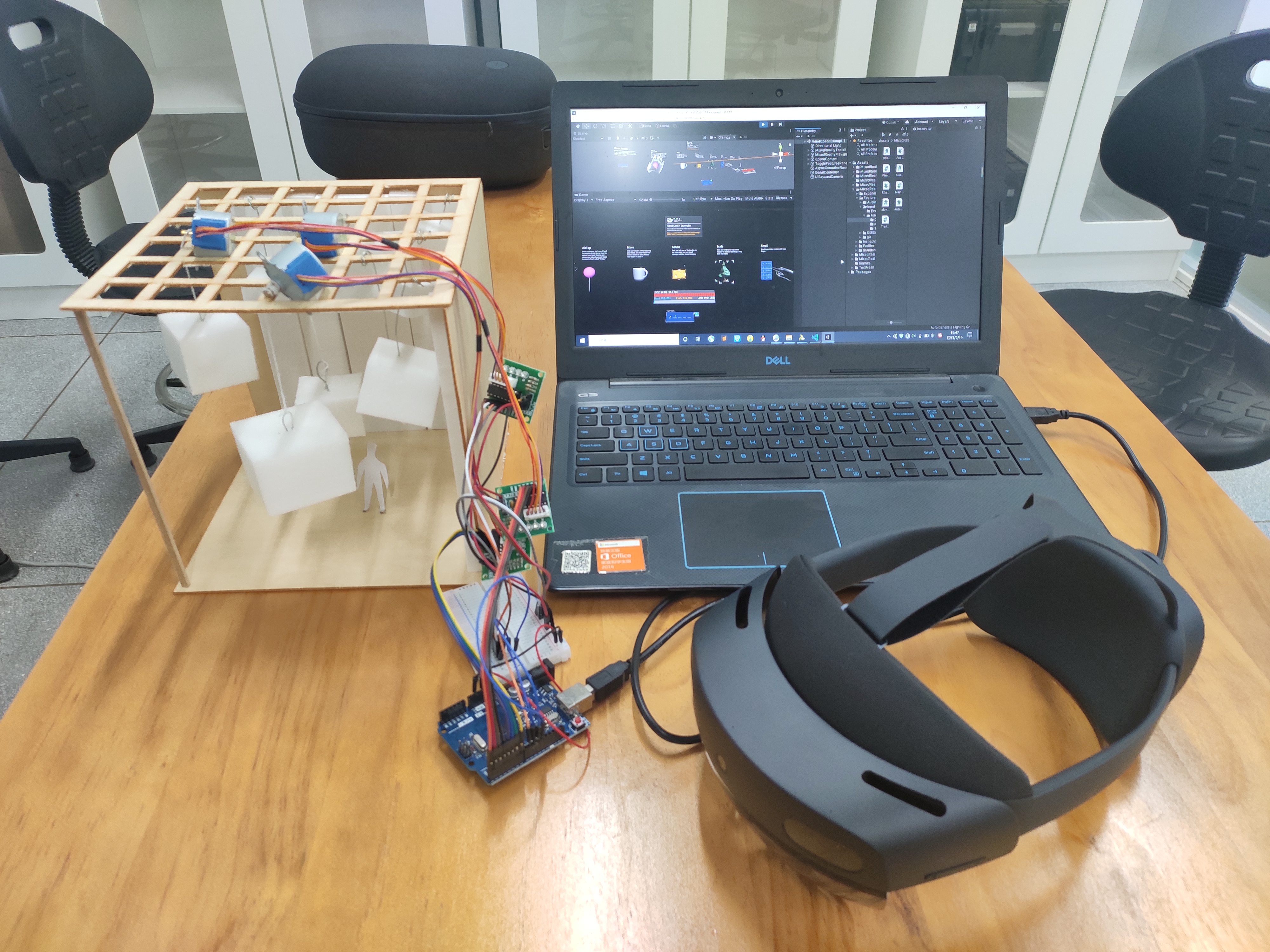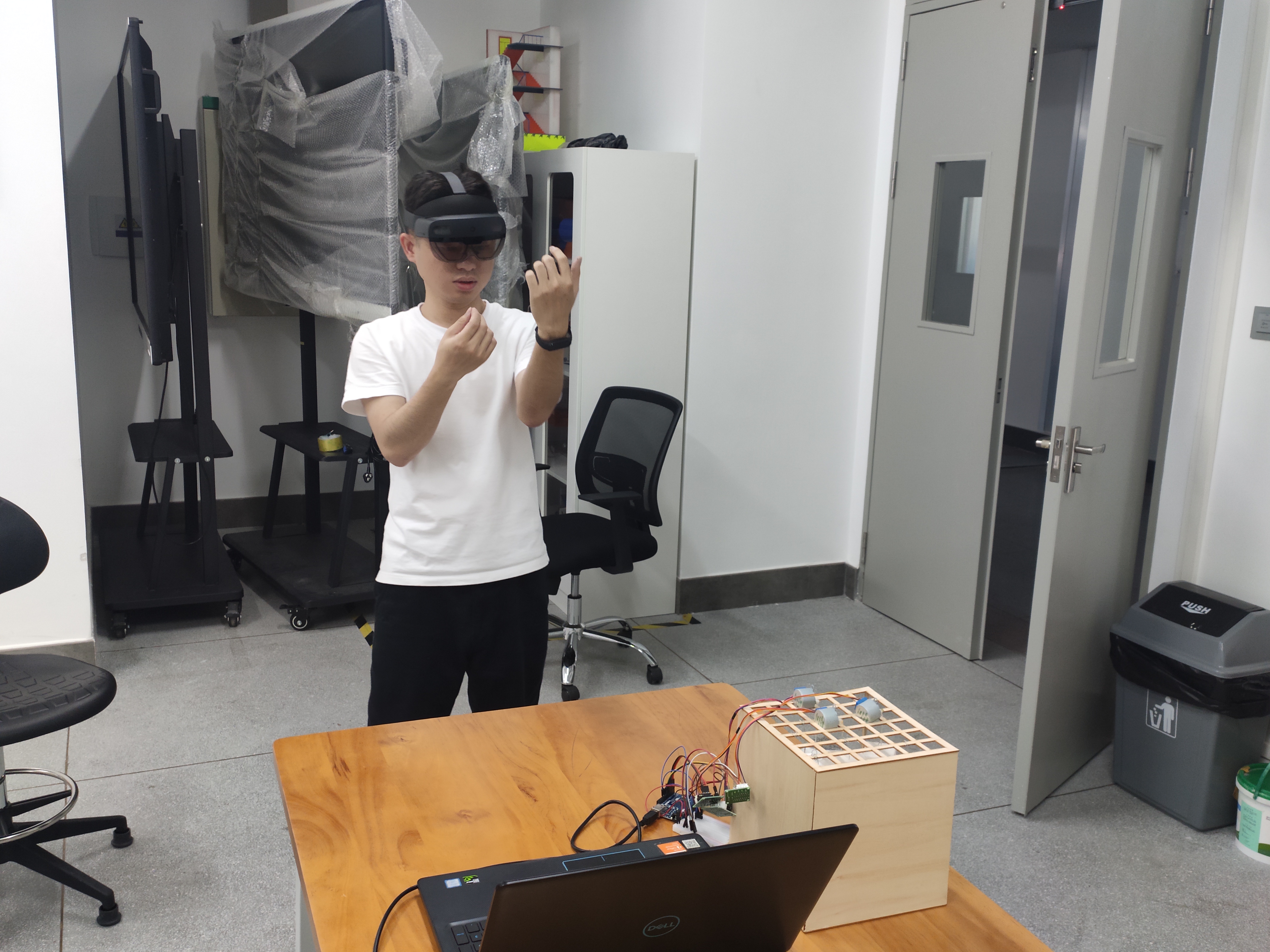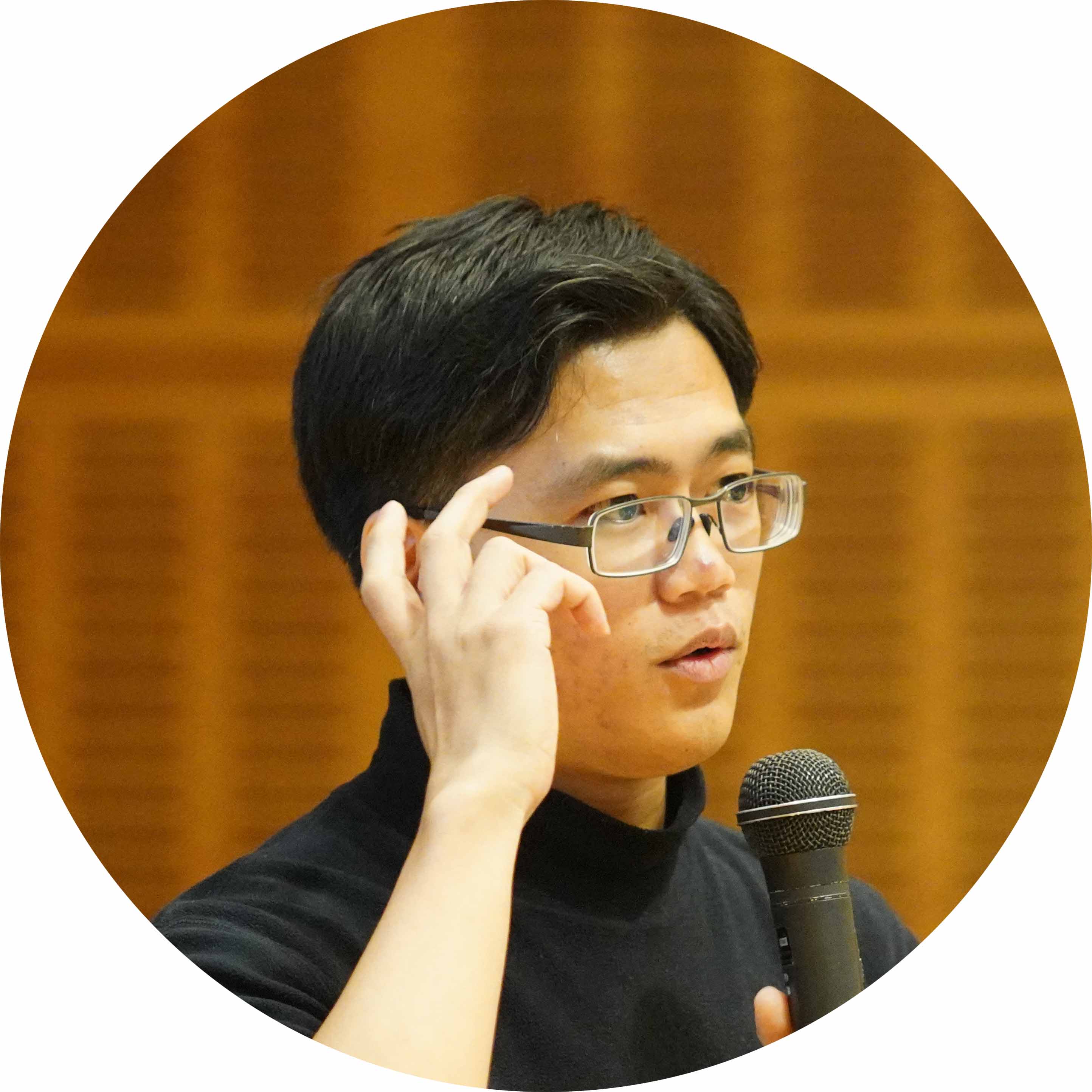Interactive Design | Online Workshop | English | Asia-Pacific
Description:
Topic: Interaction design based on mixed reality technology and Arduino
This workshop is based on mixed reality technology, and obtains user input information (such as gesture, voice, etc.) according to the interaction type of Hololens2. After Unity receives the signal of Hololens2, the signal is transmitted to the Arduino circuit board to realize the control of the motor. The rotation of the motor makes the architectural components change and causes the change of space. Users can control the entire physical building space with simple interaction. During the workshop, students will learn how mixed-reality devices connect to Unity and how user information can be converted into Arduino to transform the building space. Students need to design the input and output of the interactive process, improve the interactive process, and finally realize the linkage process of virtual information superimposed on reality.
Teaching Process:
This workshop will teach students to import the SDK of Hololens2 into Unity, get the recognition function, and modify the function. The camp will also teach students the hardware feedback of Arduino, and realize the process of using simple interaction to control the building space.
Communication:
This workshop will use Zoom to teach and Slack to communicate.
Expected Achievements:
Students are expected to form multiple teams to achieve a process of interactive control through discipline crossing. The evaluation is mainly from the input and output side effects. Students need to use good interaction to achieve meaningful spatial change around a theme.
Teaching language: English、Chinese


Key Words:
Mixed Reality,Arduino,Interaction Design,Space Design
Required Skills:
Basic modeling skills, basic programming skills
Required Software:
Unity、processing、SU、Rhino
Required Hardware:
Laptop、Arduino(provided by instructor if necessary)、Hololens2(optional)
Maximum number of participating students:
20
This workshop is based on mixed reality technology, and obtains user input information (such as gesture, voice, etc.) according to the interaction type of Hololens2. After Unity receives the signal of Hololens2, the signal is transmitted to the Arduino circuit board to realize the control of the motor. The rotation of the motor makes the architectural components change and causes the change of space. Users can control the entire physical building space with simple interaction. During the workshop, students will learn how mixed-reality devices connect to Unity and how user information can be converted into Arduino to transform the building space. Students need to design the input and output of the interactive process, improve the interactive process, and finally realize the linkage process of virtual information superimposed on reality.
Teaching Process:
This workshop will teach students to import the SDK of Hololens2 into Unity, get the recognition function, and modify the function. The camp will also teach students the hardware feedback of Arduino, and realize the process of using simple interaction to control the building space.
Communication:
This workshop will use Zoom to teach and Slack to communicate.
Expected Achievements:
Students are expected to form multiple teams to achieve a process of interactive control through discipline crossing. The evaluation is mainly from the input and output side effects. Students need to use good interaction to achieve meaningful spatial change around a theme.
Teaching language: English、Chinese


Schedule:
Jun 27 - Jul 3
-
Day 1 / Jun 27
-
Day 2 / Jun 28
-
Day 3 / Jun 29
-
Day 4 / Jun 30
-
Day 5 / Jul 1
-
Day 6 / Jul 2
-
Day 7 / Jul 3
Instructors:
-
 Tiantian Lo The Hong Kong Polytechnic University,Assistant ProfessorSky Lo is a Hong Kong-born Singaporean appointed as Assistant Professor in the School of Design. He was previously employed at the Harbin Institute of Technology (Shenzhen). During his doctoral study, he was awarded a full doctoral scholarship by the Chinese University of Hong Kong and Victoria University of Wellington. His main research area is the bottom-up human-centred architectural design concept, using XR, BIM, and gamification to create an interactive environment. He is currently working on "interactive-reality", transdisciplinary research on the interaction between the virtual and the physical environment. His work integrates design + technology to bridge the gap between the city and the rural setting. He has published numerous papers on transdisciplinary research towards interactive design and is now one of the various high-impacted academic organizations' primary committee members and reviewers. https://orcid.org/0000-0002-1992-0777
Tiantian Lo The Hong Kong Polytechnic University,Assistant ProfessorSky Lo is a Hong Kong-born Singaporean appointed as Assistant Professor in the School of Design. He was previously employed at the Harbin Institute of Technology (Shenzhen). During his doctoral study, he was awarded a full doctoral scholarship by the Chinese University of Hong Kong and Victoria University of Wellington. His main research area is the bottom-up human-centred architectural design concept, using XR, BIM, and gamification to create an interactive environment. He is currently working on "interactive-reality", transdisciplinary research on the interaction between the virtual and the physical environment. His work integrates design + technology to bridge the gap between the city and the rural setting. He has published numerous papers on transdisciplinary research towards interactive design and is now one of the various high-impacted academic organizations' primary committee members and reviewers. https://orcid.org/0000-0002-1992-0777